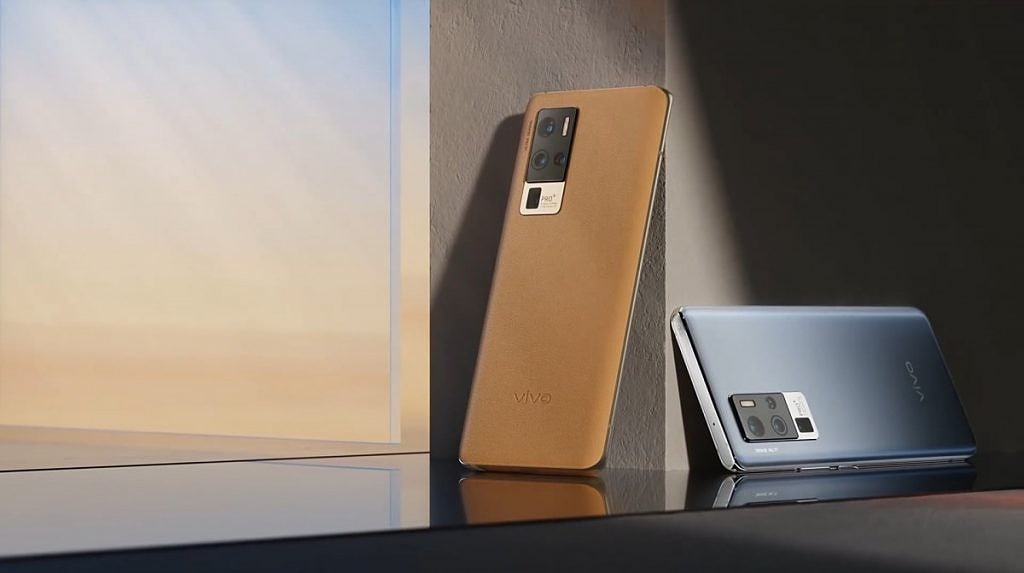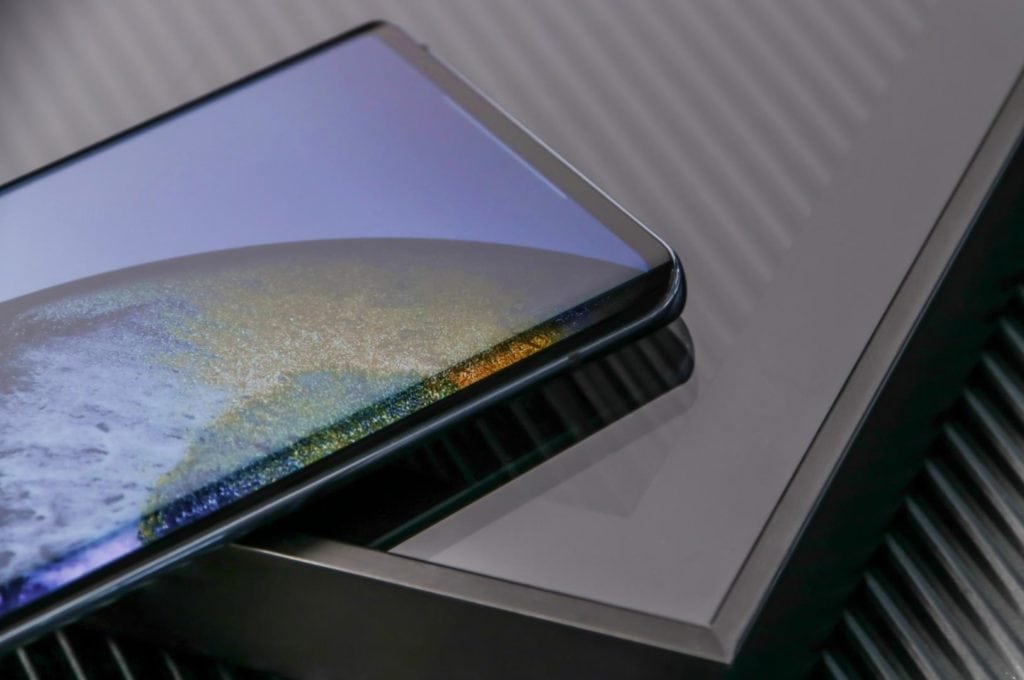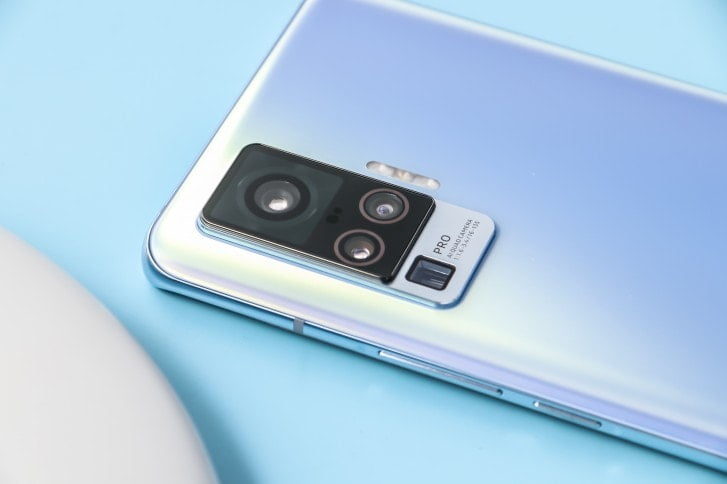Yesterday, Vivo took the wraps off their latest flagship series of phone, the X50. It comes in three flavours, a standard model, Pro and Pro Plus.
Vivo is one of the companies within the BBK Electronics Corporation conglomerate and includes popular brands such as Oppo, Realme, OnePlus and iQOO. Out of those, it is just Vivo and iQOO that do not currently target western markets. With iQOO being focussed on the Indian market and Vivo itself is a popular brand in many Eastern markets.
While we have no seen Vivo launch internationally before, it is claimed that this series will be. What that actually means, remains to be seen. In the case of Realme and Xiaomi, they seemed to roll out into Europe (with Spain as their base) then eventually move into the UK.
What differentiates them from other phones is the cameras used on the X50 Pro and X50 Pro+ which are currently not used by any other brand on the market.
To give some context to the phones, I have compared them against one of the other best camera phones this year, the Xiaomi Mi 10 Pro.
Chipset, Ram and Storage
The Vivo linkup is a little confusing, to be honest. The vanilla Vivo X50 uses the Snapdragon 765G, which is to be expected; many other brands do the same.
However, the Pro model also uses the Snapdragon 765G, you need to step up to the Pro Plus before you get the flagship spec Snapdragon 865.
The RAM and storage specs are the same between these two phones, they both start at 8GB/128GB and go up to 12GB/256GB.
It is currently being reported that both the Pro models use the older UFS 2.1 storage, which is a little odd as most companies now use UFS 3.
The Xiaomi Mi 10 Pro 5G has the flagship SD865 combined with a base spec of 8GB/256GB going up to 12GB/512GB and this uses UFS 3.0.
Display and Design

All three phones look similar front on. Each having a curved AMOLED display with a punch hole in the upper left.
For Vivo they are almost the same with a 6.56 inch display running at 2376x1080P but the Pro Plus uses an incredibly fast 120Hz display while the Pro has 90Hz.
The Xiaomi is larger at 6.67 inches running at 2340×1080 and 90Hz

Camera

So this is where things get a little confusing again with Vivo.
The cheaper Vivo X50 Pro has a world first gimbal optical image stabilisation which is housed in a massive lens on the rear. The lens will move in the opposite direction of motion shake, increasing the stability of the main camera. This should give the camera an unprecedented level of stabilisation for photos compared to other phones. In particular, this will be most useful for when recording video.
However, they have then used a slightly lower spec 48MP Sony IMX598 (which should still be superb).
For the Pro Plus model, you don’t get the gimbal, but they upgrade the main sensor to a 50MP Samsung ISOCELL GN1 custom sensor that has a big 1/1.3″ optical format and 1.2μm pixels — the sensor size is actually bigger than the Xiaomi Mi 10 Pro and Galaxy S20 Ultra 108MP sensor.
While that sensor size is massive, it is not quite as large as the Huawei P40 Pro which has a 50 MP 1/1.28″ lens.
Both the Vivo phones then have an 8MP 5x periscope zoom lens combined with a 13MP 2x zoom portrait lens and finally an 80MP ultra-wide. Both phones can then offer up to 60x zoom.
The Xiaomi is one of two phones using the massive 108 MP 1/1.33″ primary sensor, and as it currently stands, it is generally regarded as a superior implementation than the more expensive Samsung Galaxy S20 Ultra.
This is then complemented with an 8MP 5x zoom lens, a 12MP 2x optical zoom lens and a 20MP ultra-wide lens giving it an extremely versatile camera arrangement.
Both the Vivo phones then have a 32MP front-facing camera while the Xiaomi has 20MP.
Battery
All the phones have massive batteries, with not much difference between Vivo and Xiaomi.
Both the Vivo phones have a 4315 mAh battery while the Xiaomi has 4500 mAh
What differs is the charge speed, the Vivo 50 Pro is the slowest at 33W, then the Por Plus at 44W and finally the Xiaomi is the fastest at 50W. The Xiaomi also has 30W wireless charging.
Price and Availability
The Vivo X50, Vivo X50 Pro, and Vivo X50 Pro+ have launched in China at the following prices:
- Vivo X50:
- 8GB + 128GB: CNY 3498 (£393/$490)
- 8GB + 256GB: CNY 3898 (£438/$546)
- Vivo X50 Pro:
- 8GB + 128GB: CNY 4298 (£483/$602)
- 8GB + 256GB: CNY 4698 (£528/$658)
- Vivo X50 Pro+:
- 8GB + 128GB: CNY 4998 (£562/$700)
- 8GB + 256GB: CNY 5298 (£596/$770)
- 12GB + 256GB: CNY 5998(£674/$840)
If/When these phones become available in the UK the prices will be higher for us. At the very least VAT will be added so the Vivo X50 Pro will go up to £580 for the base model, and the Pro Plus will be £675 – and you can probably expect higher than that.
Annoyingly, you will have to wait until at least July before Vivo starts shipping and there is no known date for international sales.
You can currently buy the Xiaomi Mi 10 Pro 5G from Amazon Spain for 905-Euros which works out as £807
Overall
The Vivo X50 Pro models look like they could be superb choices for camera-centric phones. It is a little disappointing that the gimbal is not included on the Pro Plus model. It will be interesting to see how much of a difference it make, OIS and electrical stabilisation has improved a lot in recent years so many good phones can already record very stable video.
If video is very important to you, this will make the Pro model the likely candidate, but I would think most people would be better suited with the Vivo X50 Pro+ if it fits within your budget.
The Pro Plus seems to trade blows well with the Xiaomi, and it will be interesting to see the international launch price, I think it needs to come well under the Xiaomi to really win some users over especially with the slower storage and lower base storage.
Specification Comparison Table
| vivo X50 Pro+ | vivo X50 Pro | Xiaomi Mi 10 Pro | |
|---|---|---|---|
| Announced | 2020, June 01 | 2020, June 01 | 2020, February 13 |
| Status | Coming soon. Exp. release 2020, July | Coming soon. Exp. release 2020, June 12 | Available. Released 2020, February 18 |
| Dimensions | 158.5 x 72.8 x 8 mm (6.24 x 2.87 x 0.31 in) | 158.5 x 72.8 x 8 mm (6.24 x 2.87 x 0.31 in) | 162.5 x 74.8 x 9 mm (6.40 x 2.94 x 0.35 in) |
| Weight | 181.5 g (6.42 oz) | 181.5 g (6.42 oz) | 208 g (7.34 oz) |
| Build | Glass front, eco leather back, aluminum frame | Glass front, glass back, aluminum frame | Glass front (Gorilla Glass 5), glass back, aluminum frame |
| SIM | Dual SIM (Nano-SIM, dual stand-by) | Dual SIM (Nano-SIM, dual stand-by) | Single SIM (Nano-SIM) or Dual SIM (Nano-SIM, dual stand-by) |
| Type | AMOLED capacitive touchscreen, 16M colors | AMOLED capacitive touchscreen, 16M colors | Super AMOLED capacitive touchscreen, 16M colors |
| Size | 6.56 inches, 104.6 cm2 (~90.6% screen-to-body ratio) | 6.56 inches, 104.6 cm2 (~90.6% screen-to-body ratio) | 6.67 inches, 109.2 cm2 (~89.8% screen-to-body ratio) |
| Resolution | 1080 x 2376 pixels (~398 ppi density) | 1080 x 2376 pixels (~398 ppi density) | 1080 x 2340 pixels, 19.5:9 ratio (~386 ppi density) |
| Protection | Corning Gorilla Glass 5 | ||
| HDR10+ | HDR10+ | HDR10+ | |
| 120Hz refresh rate | 90Hz refresh rate | 90Hz refresh rate | |
| 500 nits typ. brightness (advertised) | |||
| OS | Android 10, Funtouch 10.5 | Android 10, Funtouch 10.5 | Android 10, MIUI 11 |
| Chipset | Qualcomm SM8250 Snapdragon 865 (7 nm+) | Qualcomm SDM765 Snapdragon 765G (7 nm) | Qualcomm SM8250 Snapdragon 865 (7 nm+) |
| CPU | Octa-core (1×2.84 GHz Kryo 585 & 3×2.42 GHz Kryo 585 & 4×1.8 GHz Kryo 585) | Octa-core (1×2.4 GHz Kryo 475 Prime & 1×2.2 GHz Kryo 475 Gold & 6×1.8 GHz Kryo 475 Silver) | Octa-core (1×2.84 GHz Kryo 585 & 3×2.42 GHz Kryo 585 & 4×1.80 GHz Kryo 585) |
| GPU | Adreno 650 | Adreno 620 | Adreno 650 |
| Card slot | No | No | No |
| Internal | 128GB 8GB RAM, 256GB 8GB RAM, 256GB 12GB RAM | 128GB 8GB RAM, 256GB 8GB RAM | 256GB 8GB RAM, 256GB 12GB RAM, 512GB 12GB RAM |
| UFS 2.1 | UFS 2.1 | UFS 3.0 | |
| Front | 50 MP, f/1.9, (wide), 1/1.31″, 1.2µm, Dual Pixel PDAF, gimbal OIS | 48 MP, f/1.6, (wide), PDAF, gimbal OIS | 108 MP, f/1.7, (wide), 1/1.33″, 0.8µm, PDAF, Laser AF, OIS |
| 8 MP, f/3.0, 135mm (periscope telephoto), 1/4.0″, PDAF, OIS, 5x optical zoom | 8 MP, f/3.4, 135mm (periscope telephoto), 1/4.0″, PDAF, OIS, 5x optical zoom | 12 MP, f/2.0, 50mm (telephoto), 1/2.55″, 1.4µm, Dual Pixel PDAF, 2x optical zoom | |
| 13 MP, f/2.5, 50mm (portrait), 1/2.8″, 0.8µm, PDAF, 2x optical zoom | 13 MP, f/2.5, 50mm (portrait), 1/2.8″, 0.8µm, PDAF, 2x optical zoom | 8 MP, f/2.0, (telephoto), 1.0µm, PDAF, OIS, 3.7x optical zoom, 5x hybrid zoom | |
| 8 MP, f/2.2, 120˚, 16mm (ultrawide), 1/4.0″, 1.12µm | 8 MP, f/2.2, 120˚, 16mm (ultrawide), 1/4.0″, 1.12µm | 20 MP, f/2.2, 13mm (ultrawide), 1/2.8″, 1.0µm | |
| Features | Dual-LED dual-tone flash, HDR, panorama | Dual-LED dual-tone flash, HDR, panorama | Triple-LED dual-tone flash, HDR, panorama |
| Video | 4K@30fps, 1080p@30fps, gyro-EIS | 4K@30fps, 1080p@30fps, gyro-EIS | 8K@30fps, 4K@30/60fps, 1080p@30/60/120/240/960fps; gyro-EIS |
| Rear | 32 MP, f/2.5, 26mm (wide), 1/2.8″, 0.8µm | 32 MP, f/2.5, 26mm (wide), 1/2.8″, 0.8µm | 20 MP, f/2.0, (wide), 1/3″, 0.9µm |
| Features | HDR | HDR | HDR |
| Video | 1080p@30fps | 1080p@30fps | 1080p@30fps, 720p@120fps |
| Loudspeaker | Yes | Yes | Yes, with stereo speakers |
| 3.5mm jack | No | No | No |
| 32-bit/192kHz audio | 32-bit/192kHz audio | 24-bit/192kHz audio | |
| WLAN | Wi-Fi 802.11 a/b/g/n/ac, dual-band, Wi-Fi Direct, hotspot | Wi-Fi 802.11 a/b/g/n/ac, dual-band, Wi-Fi Direct, hotspot | Wi-Fi 802.11 a/b/g/n/ac/6, dual-band, Wi-Fi Direct, DLNA, hotspot |
| Bluetooth | 5.1, A2DP, LE, aptX HD | 5.1, A2DP, LE, aptX HD | 5.1, A2DP, LE, aptX HD, aptX Adaptive |
| GPS | Yes, with dual-band A-GPS, GLONASS, BDS, GALILEO | Yes, with A-GPS, GLONASS, GALILEO, BDS | Yes, with dual-band A-GPS, GLONASS, BDS, GALILEO, QZSS |
| NFC | Yes | Yes | Yes |
| Infrared port | No | No | Yes |
| Radio | No | No | No |
| USB | Type-C 1.0 reversible connector, USB On-The-Go | Type-C 1.0 reversible connector, USB On-The-Go | 2.0, Type-C 1.0 reversible connector, USB On-The-Go |
| Sensors | Fingerprint (under display, optical), accelerometer, gyro, proximity, compass, color spectrum | Fingerprint (under display, optical), accelerometer, gyro, proximity, compass, color spectrum | Fingerprint (under display, optical), accelerometer, gyro, proximity, compass, barometer |
| Battery | Non-removable Li-Po 4315 mAh battery | Non-removable Li-Po 4315 mAh battery | Non-removable Li-Po 4500 mAh battery |
| Charging | Fast charging 44W | Fast charging 33W, 57% in 30 min (advertised) | Fast charging 50W |
| Power Delivery 3.0 | |||
| Fast wireless charging 30W | |||
| Reverse wireless charging 5W | |||
| Colors | Blue, Brown | Dark Blue, Light Blue | Alpine White, Solstice Grey |
| Price | About 630 EUR | About 600 EUR | $ 879.00 |